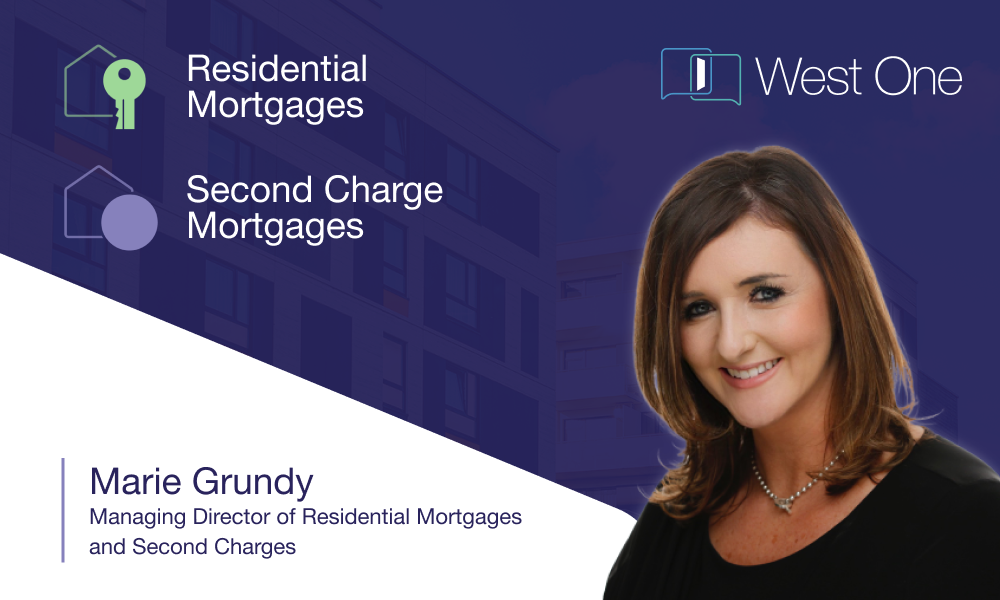 Marie Grundy - Managing Director of Residential Mortgages and Second Charges
Marie Grundy - Managing Director of Residential Mortgages and Second Charges
At the start of last year, I discussed in this magazine (the Intermediary) how the second charge market was booming.
Back then, lending was up around 40% year-on-year, and appetite for second mortgage looked very healthy indeed, quickly bouncing back from the economic effects of Covid-19. Not unexpectedly, however, in 2023 this growth has not continued at the same pace.
According to the Finance & Leasing Association (FLA), second charge lending was down 13% year-on-year in October 2023. However, the second charge market has shown resilience in tougher market conditions, especially when you consider that gross residential lending is predicted to fall by almost a quarter this year.
So, what does that outlook for seconds look like for the year ahead? I'm certain that demand for second mortgages will build as we go through 2024.
Driving growth
One standout growth driver is the rapid rise of the residential product transfers (PTs). According to UK Finance, PTs accounted for £219bn of lending last year, versus £65bn of remortgage transactions. To put that into content, total gross lending excluding PTs was only £226bn.
This is unsurprising. PTs have continued to increase in popularity in recent years, largely because they are typically easy to arrange, often via an online application without affordability checks.
Now that rates have increased, there is increased affordability compression, adding to the appeal of PTs to borrowers concerned they might not meet a new lender's affordability assessment, even though this might not actually be the case.
PTs are great if you're after convenience and are worried about meeting affordability. But they may not be appropriate for homeowners who want to borrow more. They are simply pound-for-pound transactions.
How many of the thousands of borrowers who opted for a rate-switch last year do you think had or have further borrowing needs? It's difficult to know for sure, though I imagine it would be a significant proportion.
For many, a second charge mortgage could be the most viable option to increase their borrowing. That's one reason I am confident we will see lending pick up again this year.
One of the benefits of a second charge loan, of course, is that the first charge rate is not disturbed. That's highly attractive for borrowers who are part way through an ultra-low residential first charge mortgage. Also, unlike the majority of further advances, this process is intermediate, allowing advisers to make sure that all suitable products are presented to the client.
Changing preferences
We are certainly seeing growing interest from mortgage firms in second charge mortgages, as advisers become more alive to the shift in the preferences of borrowers. It is clear there is increased recognition from firms that they need to update their business models and advice to accommodate this.
Another reason I expect an uptick in lending is the expectation that purchase activity will remain muted in 2024, while house prices will be at best static, and at worst fall.
If borrowers begin to feel that there is still some uncertainty surrounding the housing market, then we may see more decide to improve their existing property rather than move.
Currently, 12% of second charge loans are for home improvements, with a further 23% where the loan purpose is for both debt consolidation and home improvements, with a further 23% where the loan purpose is for both debt consolidation and home improvements, in line with 2022 trends, according to the FLA. Typically, though, we tend to see increased demand for home improvement loans when there is a drop in purchase activity.
The speed and ease of processing a second charge can often provide a flexible option for borrowers looking to make improvements to their property, accommodating standard home improvements all the way through to high-end projects where a larger loan size of £100,000 and above is required. As an example, we offer an interest-only product targeting higher earning borrowers who need access to larger loan sizes exactly for this sort of purpose.
The coming year should also be a better time to borrow - we're not heading back to 2% interest rates any time soon, but the cost of borrowing has fallen significantly.
For brokers, advising on second charges makes good business sense. This is especially the case if purchase lending remains muted, and more borrowers are opting for PTs. it's an opportunity to extend the services you can offer to your customer base and demonstrate your value to clients.
So, while there has been a dip, I expect to see continued interest in the second charge market. Conditions are ripe for growth this year.

.png?width=1000&height=500&name=1%20(11).png)
.png?width=1000&height=500&name=2%20(5).png)